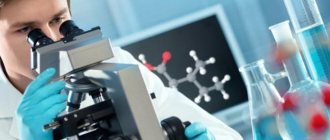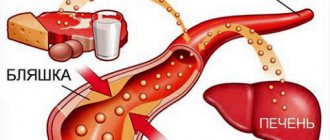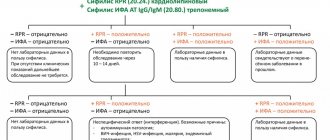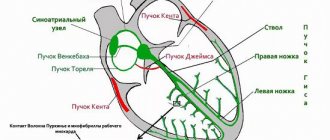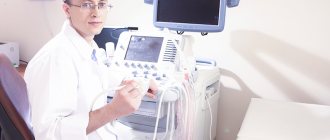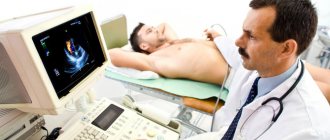Muscovites who have recovered from coronavirus infection can become blood plasma donors. The transfusion procedure allows us to help those who suffer COVID-19 especially hard. According to experts from the clinical committee of the Moscow Department of Health, COVREC blood plasma transfusion (with antibodies to coronavirus infection) is one of the potentially effective methods of treating the disease. , about a thousand people have already become plasma donors to treat patients with COVID-19 .
About how the process of donating biomaterial goes, what features and contraindications there are, see the mos.ru material.
Functional classification of plasma proteins
The content of the article
Plasma proteins are functionally and structurally heterogeneous and have a very wide range of plasma concentrations. From a clinical and biochemical point of view, it is useful to classify plasma proteins according to their function.
| Classification | Examples |
| 1. Transport proteins | Transferrin |
| 2. Acute phase proteins | CRO |
| 3. Proteins against the acute phase | Albumin, transferrin |
| 4. Complement and blood clotting factors | C4, factor VIII |
| 5. Enzymes | Amylase |
| 6. Antienzymes – proteinase inhibitors | Antithrombin III |
| 7. Proteohormones | Insulin |
| 8. Immunoglobulins | IgG |
| 9. Proteins whose function is not fully understood | Alpha 1 acid glycoprotein |
In addition to these functions, all plasma proteins, but mainly albumin, act as a buffer system and maintain oncotic pressure.
Plasma protein concentration is a dynamic parameter. It depends on:
- their biosynthesis;
- distribution between intravascular and extravascular compartments of the solution;
- excretion – degradation, catabolism, loss.
Non-protein components
In addition, blood plasma includes non-protein substances:
- organic nitrogen-containing: amino acid nitrogen, urea nitrogen, low molecular weight peptides, creatine, creatinine, indican. Bilirubin;
- organic nitrogen-free: carbohydrates, lipids, glucose, lactate, cholesterol, ketones, pyruvic acid, minerals;
- inorganic: sodium, calcium, magnesium, potassium cations, chlorine anions, iodine.
The ions in the plasma regulate the pH balance and maintain the normal state of cells.
Total protein
Total protein is the sum of all the different proteins in serum or plasma. Plasma contains 0.2-0.4% more protein than serum due to fibrinogen.
Hypoproteinemia and hyperproteinemia are nonspecific indicators. They are mainly used to assess the patient's condition. Relative hyperproteinemia is not the most common condition. The amount of total protein is influenced by the rate of protein synthesis, the rate of protein degradation, and the amount of plasma.
Increased values:
- dehydration;
- hypergammaglobulinemia – chronic infections;
- paraproteinemia – myeloma, Waldenström macroglobulinemia;
- increased acute phase protein synthesis.
Reduced values:
- loss of protein – gastroenteropathy, nephrotic syndrome, burns;
- decreased protein consumption or synthesis - protein deficiency, impaired protein breakdown and absorption, chronic liver disease, humoral immunodeficiency;
- increased metabolism and utilization of proteins – endocrinological diseases such as thyrotoxicosis; tumors;
- increased capillary permeability – generalized infection.
Possible complications
Complications may develop if the medical staff performing the procedure does not properly comply with all instructions. Plasmapheresis may be accompanied by the following complications:
- Formation of blood clots and hemolysis in the device. Thrombosis can be prevented by the use of adequate doses of heparin;
- Allergic reactions to the materials of the plasmapheresis device. The ultra-modern equipment of the Yusupov Hospital eliminates these phenomena;
- Phlebitis - a section of the vein that is punctured for blood sampling can become inflamed;
- Embolism;
- Bleeding – occurs with an overdose of drugs that reduce clotting rates. The likelihood of bleeding is increased in persons suffering from peptic ulcers of the digestive system;
- Sepsis, HIV infection (human immunodeficiency virus). At the Yusupov Hospital, plasmapheresis is performed only with sterile disposable needles and instruments, due to which the likelihood of infection is reduced to zero; the clinic has a license to provide transfusiology.
Nowadays, plasmapheresis is the most effective auxiliary method used to treat most diseases. Contrary to popular belief, this procedure does not have a general strengthening and rejuvenating effect.
The benefits of plasmapheresis are as follows:
- strengthening the body's defenses;
- reducing the level of “bad” cholesterol in the blood;
- acceleration of metabolic processes;
- improving cell oxygen saturation.
Before undergoing plasmapheresis at the Oncology Clinic of the Yusupov Hospital, patients are prescribed a comprehensive examination to identify diseases for which this procedure is contraindicated.
Albumen
Albumin makes up more than half of all protein. It is one of the lightest plasma proteins by molecular weight. Albumin is a globular protein. It plays a key role in maintaining oncotic pressure. A decrease in albumin concentration <30 g/l leads to a decrease in oncotic pressure and edema.
Main functions of albumin:
- Maintaining colloid osmotic pressure – 80% of the total colloid osmotic pressure is due to albumin.
- Transport protein - transports bilirubin, fatty acids, calcium ions, copper, thyroxine, aldosterone, as well as other lipophilic compounds and molecules. Albumin carries drugs: clofibrate, phenylbutazone, etc. And drugs associated with albumin are inactive. In patients with hypoalbuminemia, even moderate doses of the drug can cause toxic effects.
- Reserve protein - acts as a depot, as a source of amino acids.
Increased values:
Dehydration.
Reasons for the reduced value:
- Decreased absorption and synthesis of albumin:
- malnutrition;
- disturbances in the breakdown and absorption of albumin;
- violations of the use of amino acids for albumin synthesis - cirrhosis, hepatocerebral dystrophy, hepatitis, liver amyloidosis;
- congenital hypoalbuminemia.
- Increased excretion and degradation of albumin:
- loss of albumin through the skin - thermal burns, exudative dermopathy;
- loss of albumin through the kidneys – nephrotic syndrome;
- loss of albumin through the gastrointestinal tract - enteropathy - albumin value may be less than 20 g / l;
- increased albumin catabolism – endocrinological pathologies: thyrotoxicosis, Itsenko-Cushing syndrome; acute and chronic infections, injuries, tumors;
- increased distribution of albumin - hyperhydration, increased capillary permeability - generalized infection.
Fibrinogen
Acts as a special protein. It is produced in the liver. The main task is to ensure normal blood clotting. The process takes place in several stages.
- As soon as the body needs to close a wound, a gap in the tissues, the synthesis of special substances-factors begins. These include fibrinogen.
- Once the amount of a substance reaches a certain value, it is subject to breakdown. A special compound called thrombin is involved.
- Fibrinogen is destroyed and breaks down into sticky components. The so-called threads.
- After the factor has precipitated, it adheres to the site of the lesion, platelets, ensuring normal coagulation. A blood clot forms and covers the wound surface. It then forms a hard scab.
The process occurs whenever a lesion is formed. If there is not enough fibrinogen, coagulopathies begin. Normal clotting is disrupted. The blood becomes too thin.
Amino acids
They act as a kind of building material for the cells of the body. They are also part of their walls, ensuring normal conductivity of the cytoplasmic membrane. And at the same time its strength and elasticity.
- Fats. Lipids, like amino acids, are the main building materials. The key one is cholesterol, which is well known to everyone.
- Glucose. Acts as a nutrient. Works as a special stock. Because during splitting a large amount of energy is released. As a rule, during the production of donor material, glucose is not removed; it remains in place.
- Hormones. Those that are produced in the patient's body. They act as a kind of mediators, substances that transmit signals to tissues and entire systems. This is their main task.
- Minerals. Iodine, iron, chlorine, dozens of other substances. Both in the form of a complete compound that does not enter into simple reactions, and in the form of charged ions. It is the latter that maintain normal blood acidity and participate in the functioning of cells and cytoplasmic membranes.
All substances perform two main functions. If we talk about the issue in general.
Which ones exactly:
- Ensuring proper metabolism.
- Maintaining a state of homeostasis. When the body is in balance, works correctly and is stable in relation to itself.
A deficiency or excess of any compound immediately results in disorders. In this case, treatment is required.
Protein fractions
Protein fractionation is an indicative quantitative method for estimating the amount of specific proteins. Mainly 5 protein fractions are identified and interpreted:
- albumen;
- alpha-1-globulins;
- alpha-2-globulins;
- beta-globulins, fractions of beta-1-globulins and beta-2-globulins can also be distinguished;
- gamma globulins.
The clinical interpretation of these fractions is determined by the proteins they contain.
Albumin fraction:
- prealbumin;
- albumen.
Alpha-1 globulin fraction:
- alpha-1 antitrypsin;
- alpha-1 acid glycoprotein – orosomucoid;
- alpha-1 lipoprotein – apolipoprotein A;
- chymotrypsin alpha 1;
- alpha fetoprotein.
Alpha-2 globulin fraction:
- alpha-2-macroglobulin;
- haptoglobulin;
- ceruloplasmin;
- beta lipoprotein (apolipoprotein B may also be in the beta region on some electropherograms);
- hemopexin;
- antithrombin III;
- C1-esterase inhibitor.
Beta globulin fraction:
- transferrin (beta-1 globulin zone);
- complement C4 (beta-1 globulin zone);
- complement C3 (beta 2 globulin zone);
- beta-2-microglobulin (beta-2-globulin zone).
Gamma globulin fraction:
- immunoglobulin A;
- immunoglobulin M;
- immunoglobulin G;
- fibrinogen (in plasma samples);
- immunoglobulin E;
- immunoglobulin D;
- immunoglobulin light chains;
- C-reactive protein;
- lysozyme (muramidase).
Donors are waiting
On average, the Institute named after N.V. Sklifosovsky accepts 10–20 plasma donors who have recovered from coronavirus per day. The point is open in the morning, seven days a week. Up to 10 donors can donate blood at the same time. In case of a large number of applicants, the number of places and opening hours will be increased.
“It would be desirable to have more donors. Because if you start using plasma everywhere in all hospitals, then this amount will definitely not be enough. We don't know when the epidemic will subside or how many more transfusions will be needed. But, in my opinion, it would be nice if there were more donors, at least two or three times,” says Alexander Kostin.
The plasma donation process takes about 40 minutes. At this time, using a plasmapheresis apparatus, the donor’s blood is divided into plasma and cellular fraction, red blood cells and other blood cells are returned, and the collected plasma is transferred to a hemocontainer. If the donor is light or has thin veins, they can take not 600, but, for example, 400 milliliters of plasma. This is also a significant help.
For many people, collecting plasma is a less stressful process than donating full blood. After the procedure, the donor remains under medical supervision for another 20 minutes.
Plasma can now be donated at four medical institutions : Blood Center named after O.K. Gavrilova (Bakinskaya street, building 31), Research Institute of Emergency Medicine named after N.V. Sklifosovsky (Bolshaya Sukharevskaya Square, building 3, building 12), city clinical hospital No. 52 (Infantry street, building 3, building 1) and city clinical hospital named after M.P. Konchalovsky (Zelenograd, Kashtanovaya Alley, building 2, building 1).
In addition, plasma can be collected at organized events: for example, the other day such an event took place at the site of the My Social Center club in South Butovo. Social workers who recovered from COVID-19 became plasma donors. Some of them shared stories about their struggles with the disease.
Alpha-1-globulin fraction
The alpha-1-globulin fraction consists predominantly of alpha-1-antitrypsin. Typically, the remaining globulins make up only 10% of the alpha-1 globulin fraction.
Increased values:
- acute, subacute, chronic inflammatory processes associated with increased protein synthesis in the acute phase;
- some malignancies - alpha-fetoprotein can increase almost 100-fold and give a separate increase between the albumin and alpha-1-globulin fractions.
Reduced values:
- alpha-1 antitrypsin deficiency;
- lipoproteinemia hypoalpha 1 – rare.
Beta globulin fraction
The beta globulin fraction consists of transferrin and may contain beta lipoproteins, complement components C3, C4.
Increased values:
- hyperlipoproteinemia – abnormally elevated levels of lipids or lipoproteins in the blood;
- monoclonal gammopathies are a collective name for a whole class of diseases, in which pathological secretion of abnormal immunoglobulins, altered in chemical structure, molecular weight or immunological properties, occurs;
- iron deficiency anemia associated with elevated transferrin levels;
Reduced values:
hypolipoproteemia – low levels of lipids or lipoproteins in the blood.
Positive effects
Plasmapheresis allows you to cleanse the blood of harmful substances:
- Metabolic products - uric acid, urea, creatinine;
- Inflammatory mediators;
- Hormones;
- Antigens;
- Antibodies;
- High molecular weight lipids;
- Toxins.
The procedure allows you to achieve significant physiological changes. By creating artificial hypovolemia, the body's protective properties are activated. Swelling decreases, the concentration of harmful substances in the blood decreases.
The most common pathological types of electrophoresis.
Protein electrophoresis has diagnostic value. In other cases, electrophoresis is for informational purposes only.
The Six Most Common Types of Abnormal Electrophoresis
- Nephrotic syndrome.
Increased values:
- alpha-2-globulins (alpha-2-macroglobulin);
- beta globulins.
Reduced values:
- albumen;
- alpha-1-globulins;
- gamma globulins.
- Cirrhosis.
Increased values:
- gamma globulins – diffuse gamma globulinemia, fusion of beta globulin and gamma globulin fractions;
- beta globulins.
Reduced values:
albumen.
- Alpha-1 antitrypsin deficiency
- Hypogammar globulinemia
- Diffuse hypergamma globulinemia
- Paraproteinemia.
Diet after plasmapheresis
The diet after plasmapheresis should be rich in protein products, since it is foods high in protein, amino acids and healthy fats that have a positive effect on the functioning of the whole body. Alcohol can be taken after plasmapheresis only a week later and in small quantities. Of the possible drinks, you should give preference to dry red wine.
Even in everyday life, moderate consumption (up to 100 grams per day) of red wine normalizes the activity of the heart muscle, helps the synthesis of fatty acids, improves the condition of blood vessels, and also tidies up connective tissues. In other cases, it is not advisable to combine plasmapheresis and alcohol; especially, you should not drink in excessive quantities. After plasmapheresis, you should include the following protein-rich foods in your diet:
- meat: rabbit, lamb, beef, chicken (especially sirloin);
- eggs;
- legumes: beans, peas, lentils, chickpeas and others;
- rye and white bread with bran;
- soy asparagus;
- cottage cheese, kefir, fermented baked milk, hard cheese, yogurt and other fermented milk products;
- nuts and seeds: hazelnuts, almonds, cashews, Brazil and pine nuts, pumpkin and sunflower seeds, flax and chia seeds;
- dried mushrooms;
- soy and soy products;
- fish and seafood: cod, tuna, trout, sturgeon, tilapia, mullet, sardines, squid, anchovies, mussels, shrimp;
- avocado;
- peanut butter.
Plasmapheresis is the most effective and efficient method of blood purification, capable of long-term correction of the patient’s general condition and delay the development of microorganisms that contribute to the development of diseases.
Paraproteins
The term “paraprotein” (synonyms: M-gradient, monoclonal gamma globulin, M-component) refers to a homogeneous immunoglobulin. It is found in high quantities in blood and other body fluids. The detection of paraprotein in the blood indicates a serious change in the normal production of immunoglobulins.
Paraproteins are mainly characteristic of myeloma and Waldenström's macroglobulinemia, but are also found in patients with other lymphoproliferative diseases: chronic lymphocytic leukemia, lymphoma, etc.
A characteristic feature of this immunopathology is that as the amount of paraprotein increases, the amount of normal immunoglobulins decreases. Consequently, the disease is accompanied by various bacterial infections.
Depending on the immunological class IgG or IgA, myeloma G and myeloma A are distinguished. Myeloma D and E are very rare, with paraproteins IgD and IgE, respectively. The IgM paraprotein is characteristic of Waldenström's macroglobulinemia but is also observed in patients with other malignant lymphomas.
Detection and identification of paraprotein in blood or urine is important for diagnostic purposes, as it helps to select appropriate treatment methods and partially predict the clinical course of the disease.
The paraprotein found in urine is usually referred to by the outdated term "Ben Jones protein" or by the now widely used terms "uroparoprotein", "micromolecular paraprotein".
Immunofixation electrophoresis identifies monoclonal protein - a class of immunoglobulins, a type of light chain - in human serum and urine. Immune fixation electrophoresis is also used to confirm the M gradient determined by protein electrophoresis.
Functions in the body
It is necessary to consider what each of the named compounds does. But first, you need to say a few words about the general functions of plasma as a liquid fraction of blood as a whole.
She does a special job:
- The main function of plasma is to transport formed cells throughout the body. Without this part of the connective tissue, the mobility of substances is impossible. It mechanically captures red and white cells and other cells and then transports them throughout the body.
The current can increase if there is a stimulus from the central nervous system. It all depends on the specific case. In this sense, plasma performs the function of homeostasis. That is, maintaining the body in natural, dynamic balance.
- Cleanses the body. Plasma acts as a kind of cleaner. Because it circulates constantly. The substance can capture decay products of tissues and cells, waste products and carries them to the liver and kidneys for natural processing and removal from the body.
In addition, among the functions:
- Giving blood a liquid structure. Thanks to plasma, oddly enough, connective tissue acquires the necessary rheological properties. If the concentration decreases, there is a high probability of blood thickening and blood clots. This is an extremely dangerous condition.
- Binding of body fluids. Those that are produced by the body, its individual structures. For example, intercellular transudate or others. The question is quite broad.
These are the basic functions that plasma performs as an integral macro-formation. Individual substances provide their own tasks and solve them constantly.
What is it about?

